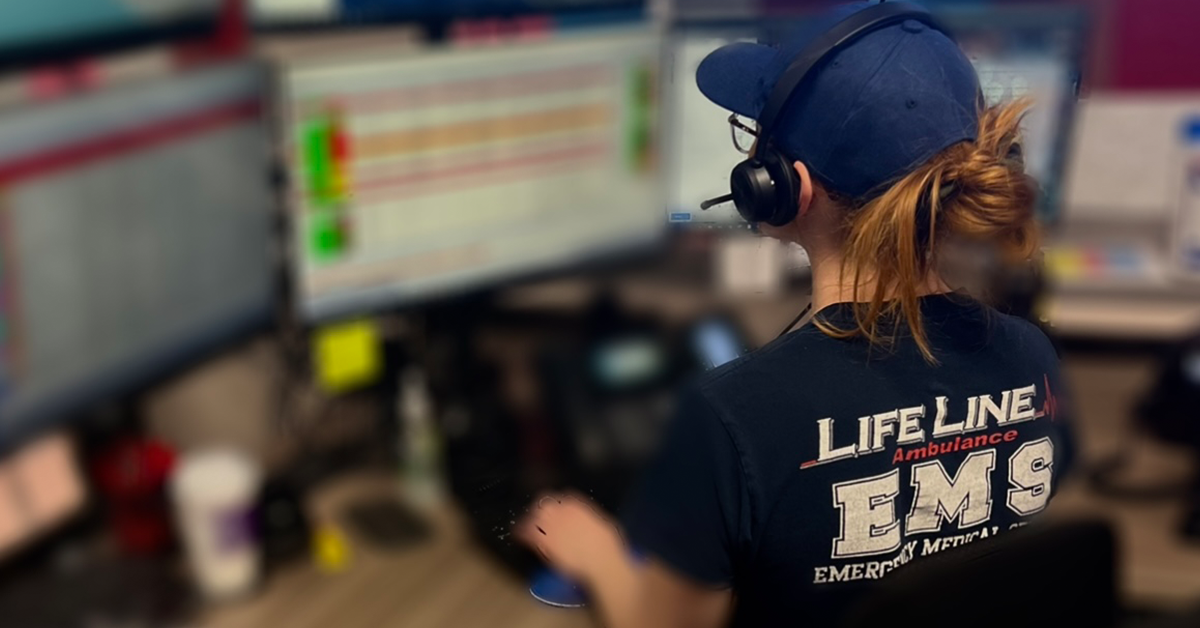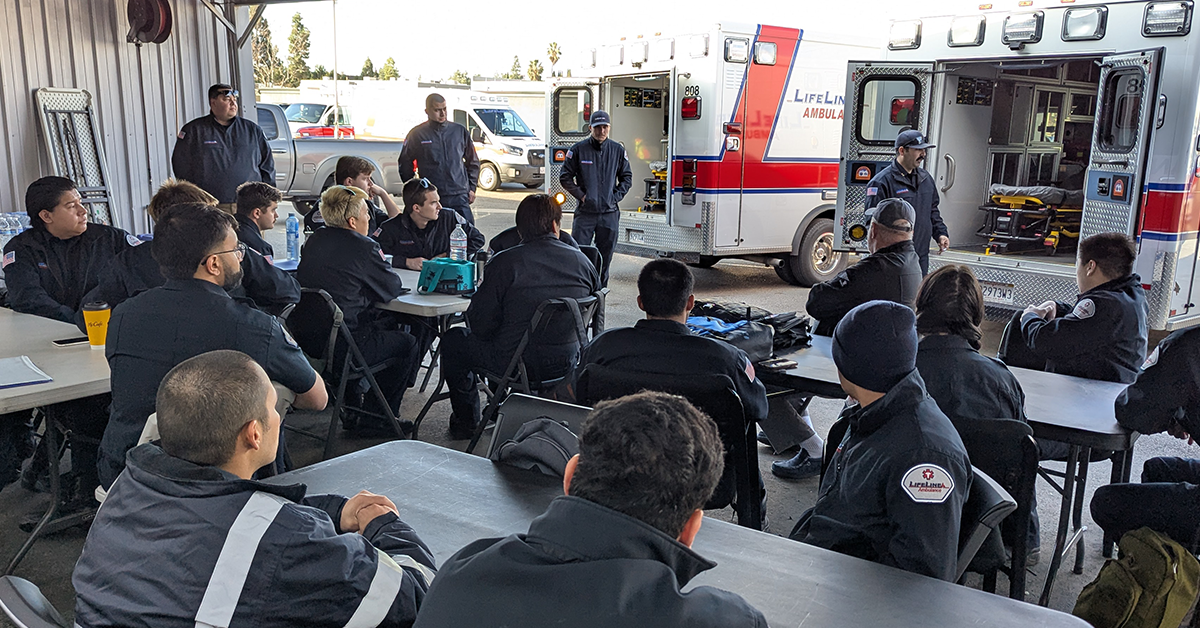Starting a career as an Emergency Medical Technician (EMT) is both exciting and challenging. New EMTs need robust training, practical experience, and guidance to succeed in this fast-paced and demanding field. LifeLine EMS, a leader in emergency medical services in Los Angeles and Southern California, is dedicated to supporting new EMTs through comprehensive training and mentorship programs that build confidence, develop skills, and provide ongoing support. This article explores the ways LifeLine EMS helps new EMTs excel, from initial training to continuous mentorship, ensuring they are well-prepared to deliver high-quality patient care.
Why Training and Mentorship Matter for New EMTs
EMS is a complex and high-stakes field where quick thinking, teamwork, and technical skills are essential. For new EMTs, formal training provides the foundation for effective emergency response, while mentorship offers guidance and support as they transition from the classroom to the field. Both elements are crucial for success and long-term career growth in EMS.
The Importance of Comprehensive Training
Training provides new EMTs with the skills and knowledge needed to handle a wide range of medical emergencies. LifeLine EMS ensures that all new EMTs receive thorough training that prepares them for real-world scenarios.
- Foundational Knowledge: Initial training covers anatomy, physiology, basic life support (BLS), trauma care, and patient assessment, providing new EMTs with a solid understanding of essential concepts and practices.
- Hands-On Skills Development: EMTs practice skills such as CPR, airway management, and splinting in a controlled environment, ensuring they are confident and capable before encountering real patients.
- Simulation-Based Learning: Simulated scenarios allow EMTs to practice responding to emergencies in a realistic setting, building their ability to think critically and make quick decisions under pressure.
The Role of Mentorship in EMS
Mentorship helps new EMTs navigate the challenges of their first year on the job, providing personalized support, advice, and encouragement. LifeLine EMS’s mentorship program pairs new EMTs with experienced professionals who guide them through the complexities of the role.
- Professional Guidance: Mentors share insights on best practices, workplace dynamics, and effective patient care, helping new EMTs acclimate to their roles.
- Emotional Support: EMS work can be emotionally demanding. Mentors offer a listening ear and advice on managing stress, building resilience, and maintaining work-life balance.
- Career Development: Mentors help new EMTs set career goals, identify areas for improvement, and explore pathways for advancement within EMS.
LifeLine EMS’s Training Program for New EMTs
LifeLine EMS’s training program is designed to provide new EMTs with the skills and knowledge they need to excel in the field. The program includes a blend of classroom instruction, hands-on practice, and real-world experience.
1. Classroom Instruction
The training program begins with classroom instruction, where new EMTs learn the foundational knowledge needed for their role. LifeLine EMS’s experienced instructors cover a range of topics, from emergency medical protocols to patient assessment techniques.
- Medical Knowledge: New EMTs study anatomy, physiology, pharmacology, and the principles of emergency care. This theoretical foundation helps them understand the medical basis for their actions in the field.
- Communication Skills: Effective communication is vital for EMTs. Training includes instruction on how to communicate with patients, families, and other healthcare providers, emphasizing clarity, empathy, and professionalism.
- Safety Protocols: EMTs learn about workplace safety, infection control, and procedures for handling hazardous materials, ensuring they can protect themselves and others in various emergency situations.
2. Hands-On Skills Training
After building a solid theoretical foundation, new EMTs at LifeLine EMS participate in hands-on training to practice essential skills. This phase of the training program emphasizes practical application and muscle memory.
- Basic Life Support (BLS): New EMTs learn CPR, how to use automated external defibrillators (AEDs), and techniques for managing airway obstructions. These skills are fundamental to EMS work and can save lives in critical situations.
- Patient Assessment: EMTs practice assessing patients’ vital signs, identifying symptoms, and determining the best course of action based on their findings. This skill is essential for making quick, informed decisions in the field.
- Trauma Care and Stabilization: New EMTs learn how to manage trauma cases, including controlling bleeding, immobilizing fractures, and treating burns. These hands-on skills are crucial for stabilizing patients before transport.
3. Simulation-Based Training
Simulation-based training is a key component of LifeLine EMS’s program for new EMTs. These realistic scenarios prepare EMTs for the types of emergencies they will encounter in the field, allowing them to practice their skills in a controlled environment.
- High-Fidelity Simulations: LifeLine EMS uses high-fidelity simulation technology to create realistic emergency scenarios, such as cardiac arrests, motor vehicle accidents, and respiratory emergencies. These simulations enable EMTs to apply their skills in a lifelike setting.
- Team-Based Exercises: New EMTs participate in team-based simulations, working with other EMTs and paramedics to manage complex emergencies. This experience helps them develop teamwork, coordination, and communication skills.
- Debriefing and Feedback: After each simulation, EMTs receive feedback from instructors and mentors, helping them reflect on their performance and identify areas for improvement.
LifeLine EMS’s Mentorship Program for New EMTs
The transition from training to the field can be challenging for new EMTs. LifeLine EMS’s mentorship program provides ongoing support to help them navigate this period successfully. Through the program, new EMTs are paired with experienced mentors who offer guidance, encouragement, and practical advice.
1. One-on-One Mentorship
New EMTs at LifeLine EMS are matched with mentors who have extensive experience in the field. These one-on-one relationships provide personalized support tailored to each EMT’s unique needs and goals.
- Skill Development: Mentors work with new EMTs to refine their skills, offering tips on improving patient care, navigating emergency scenes, and handling specific medical situations.
- Guidance on Protocols and Procedures: Mentors help new EMTs understand LifeLine EMS’s protocols and procedures, ensuring they are familiar with organizational standards and best practices.
- Practical Advice: Experienced mentors share practical tips on topics such as managing stress, staying organized during shifts, and maintaining professionalism in challenging situations.
2. Shadowing and Field Experience
As part of the mentorship program, new EMTs have the opportunity to shadow their mentors on calls. This hands-on experience helps new EMTs apply what they’ve learned in training and gain confidence in their abilities.
- Observation and Learning: New EMTs observe their mentors in action, watching how they assess patients, make treatment decisions, and communicate with others on the scene. This experience provides valuable insights into the day-to-day realities of EMS work.
- Gradual Transition to Independence: With the support of their mentors, new EMTs gradually take on more responsibility during calls, allowing them to build confidence and competence before working independently.
- Feedback and Reflection: After each call, mentors provide feedback, helping new EMTs reflect on their experiences, learn from any challenges, and celebrate their successes.
3. Ongoing Support and Check-Ins
LifeLine EMS’s mentorship program includes regular check-ins, allowing mentors to monitor their mentees’ progress and provide support as needed. These check-ins create a safe space for new EMTs to discuss their experiences, ask questions, and seek advice.
- Scheduled Meetings: Mentors and new EMTs meet regularly to discuss progress, review skills, and address any challenges that arise. These meetings provide a structured opportunity for ongoing learning and development.
- Open Communication: Mentors encourage open communication, letting new EMTs know they can reach out at any time for advice or support. This open-door policy helps new EMTs feel valued and supported throughout their journey.
- Long-Term Guidance: Even after new EMTs complete their initial mentorship period, they often maintain relationships with their mentors, seeking guidance as they continue to grow in their careers.
Benefits of LifeLine EMS’s Training and Mentorship Programs
LifeLine EMS’s commitment to training and mentorship offers numerous benefits for new EMTs, equipping them with the skills, confidence, and support needed for a successful career in EMS.
1. Building Confidence and Competence
By providing comprehensive training and personalized mentorship, LifeLine EMS helps new EMTs build confidence in their abilities and competence in their skills. This support is crucial for navigating the challenges of EMS work and delivering high-quality patient care.
- Preparedness for Real-World Scenarios: The combination of classroom instruction, hands-on skills training, and simulation-based learning ensures that new EMTs are well-prepared for the types of emergencies they will encounter in the field.
- Supportive Learning Environment: Mentorship offers a supportive environment where new EMTs can ask questions, receive feedback, and learn from experienced professionals, fostering a culture of continuous learning and improvement.
2. Fostering Long-Term Career Success
LifeLine EMS’s training and mentorship programs are designed with long-term career success in mind, providing new EMTs with the foundation they need to grow and thrive in the EMS field.
- Career Development Opportunities: Through mentorship, new EMTs gain insights into potential career paths within EMS, from advanced medical roles to leadership positions. Mentors help new EMTs set goals and explore opportunities for advancement.
- Skills for Lifelong Learning: LifeLine EMS’s emphasis on professional development encourages new EMTs to pursue ongoing education and certifications, ensuring they stay up-to-date with industry advancements and best practices.
3. Enhancing Patient Care and Community Impact
By supporting new EMTs with training and mentorship, LifeLine EMS ensures that its teams are equipped to provide the highest level of patient care. This commitment to quality not only benefits patients but also enhances the organization’s positive impact on the community.
- Improved Patient Outcomes: Well-trained and supported EMTs are better able to respond to emergencies effectively, improving patient outcomes and contributing to the overall health and safety of the community.
- Building Community Trust: LifeLine EMS’s dedication to developing skilled and compassionate EMTs helps build trust with the communities it serves, reinforcing the organization’s reputation as a reliable and caring provider of emergency medical services.
Keep Reading
Want more? Here are some other blog posts you might be interested in.
In the high-stakes world of emergency medical services, clear and effective communication can mean the difference between life and death. EMS professionals...
Emergency Medical Services is an ever-evolving field that requires constant learning and adaptation. With medical advancements, technological innovations, and increasing public health...
Emergency Medical Services s a high-stress, physically demanding profession that requires dedication, quick decision-making, and resilience. While the rewards of saving lives...






